#cotlliure
Explore tagged Tumblr posts
Text
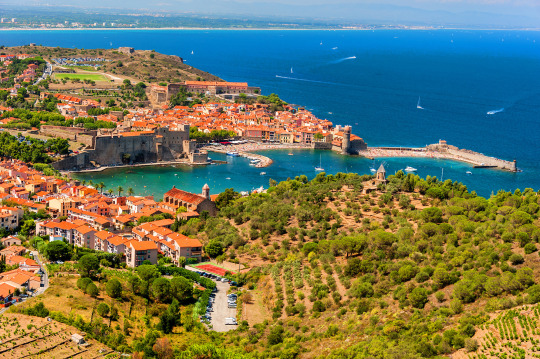
Cotlliure, vila de la Catalunya del Nord, Principat de Catalunya.
#Cotlliure#Catalunya#Principat de Catalunya#Catalunya del Nord#Albera#Rosselló#Costa Vermella#pobla#vila#port#mediterrani#mediterraneu#Mediterrània
2 notes
·
View notes
Text
Hii, I'm doin' my second trip to France🇫🇷. But now, I'm going to Cotlliure🏘, a village in front of the sea🌊 near the frontier with Spain🇪🇦.
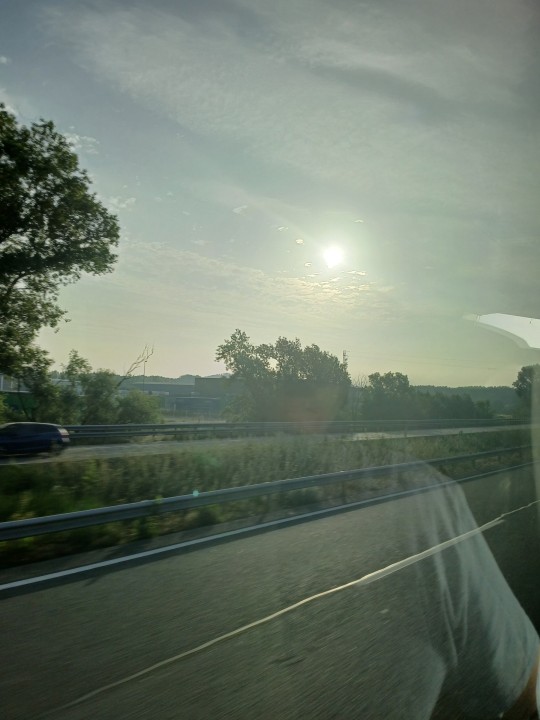
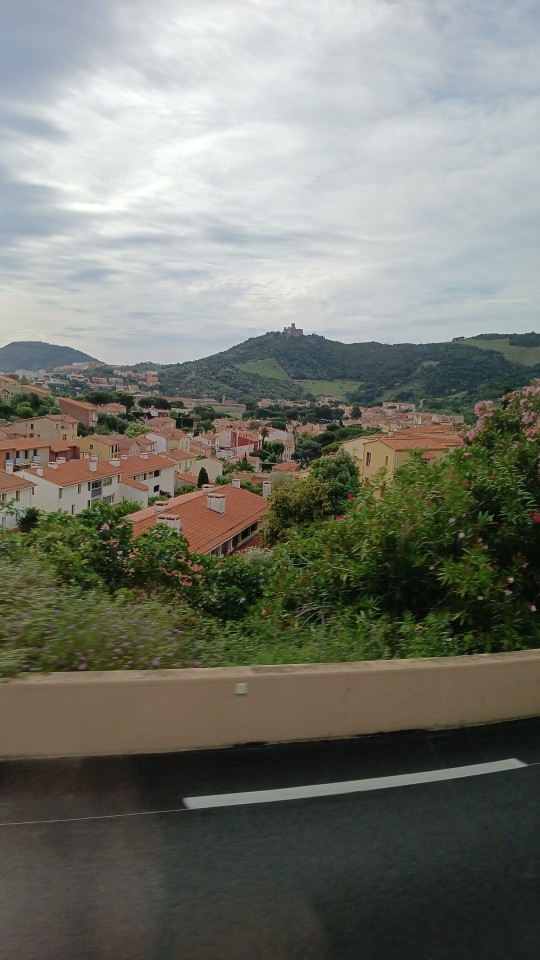

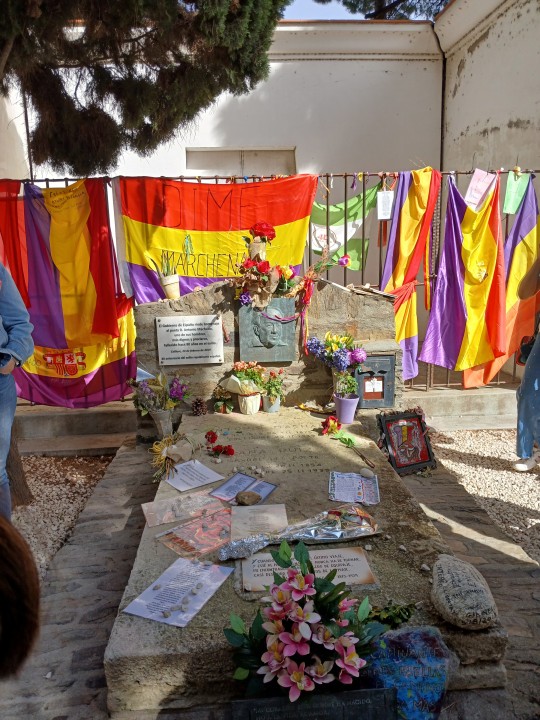
We arrived and we visited the tomb of Antonio Machado, a Spanish poet who was running away from the dictarship and arrived to Cotlliure, where he was dying.
#artists on tumblr#sunset#antonio machado#Cotlliure#fyp#fypage#fypシ#photographers on tumblr#tumblr#tumblr fyp#scrapbook#sea
1 note
·
View note
Text
Yet it would have had to be strangely dark for his feet to have missed this path. It wound up, crossing and recrossing the stream, its steps kept open by the odd fisherman after crayfish, the impotent men going to bathe in the pool and by a few other travellers; and his hand reached out of itself for the branch that would help him over a deep place – a branch polished by many hands. Up and up: and the warm air sighing through the pines. At one point he stepped out on to a bare rock and there, wonderfully far below already, rowed the boats with their train of almost sunken barrels, not unlike the spaced-out eggs of the common toad; then the path ran back under the trees and he did not emerge again until he was on the thyme and the short turf, the rounded top of the promontory jutting out bare from the sea of pines. Apart from a violet haze on the farther hills and a startling band of yellow in the sky, colour had all gone; but he saw white scuts bobbing away, and as he had expected there were the half-seen forms of shadowy nightjars wheeling and darting, turning like ghosts over his head. He sat down by a great stone that said Non fui non sum non curo, and gradually the rabbits came back, nearer and nearer, until on the windward side he could indeed hear their quick nibbling in the thyme. He meant to sit there until dawn, and to establish a continuity in his mind, if that could be done: the friend (though existent) was a mere pretext. Silence, darkness and these countless familiar scents and the warmth of the land had become (in their way) as necessary to him as air.
- Master and Commander, Patrick O'Brian
#the CHARACTER he puts into his descriptions!!!!!#also when i was in cotlliure i went for a walk from the cemetary back to the village#and it felt a bit like this. i was kind of imagining that as i read it and what a beautiful feeling#he's still a landsman!! this is still his home despite jack's fear re: my last post#the way these characters change over the series but he's still fundamentally himself even at the very beginning....aughhhhh#many thought many thoughts#perce rambles#aubreyad#The Creative Endeavor and other aubreyad nonsense
41 notes
·
View notes
Text
Castell de Santa Pau
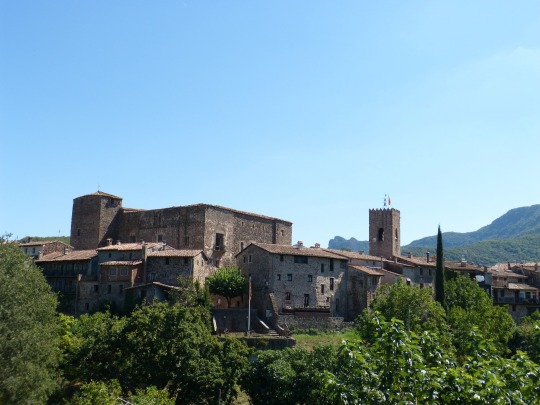
El castell de Santa Pau es remonta en els seus orígens documentats al segle IX, quan aquest topònim pareix esmentat per primera vegada. No obstant, l’actual castell, de planta quadrada i assentat sobre el promontori rocós on és situada la població homònima, va començar a ser bastit cap al segle XII.
En aquell moment, els senyors de Finestres, pertanyents al llinatge familiar dels Porqueres, van concedir en feu el castell de Santa Pau a la família del mateix nom. Al llarg de més de 60 anys, a cavall entre els segles XII i XIII es succeïren quatre castlans d’aquest llinatge, moment en que apareixen els senyors de Santa Pau, encara que el títol es presuposa que ja existia anteriorment.
Els Porqueres, en vendre’s a mitjan del segle XII el seu castell familiar a l’abat de Banyoles, van adoptar el cognom de Santa Pau i s’instal·laren a la Garrotxa, exercint-hi d’amfitrions del rei Pere el Gran en la seva campanya contra els francesos, que va acabar amb la batalla del coll de Panissars.
Diversos barons de Santa Pau van estar al costat dels reis de la Corona d’Aragó, com Ponç III, que participà a la campanya siciliana el 1297, o Huguet II, que reté homenatge el 1312 a Jaume II pels seus castells, inclosos els de Finestres i Santa Pau.
Més tard, al segle XV, la propietat de la baronia figura en mans de la família Oms. Probablement el primer baró de Santa Pau d’aquest llinatge va ser Berenguer V, que també ostentava la baronia de Montesquiu i era castlà de Cotlliure, entre d’altres títols.
A partir d’aquí, el llinatge d’Oms adopta l’afegit “de Santa Pau”. El primer en fer-ho va ser el fill d’en Berenguer, Guillem I d’Oms de Santa Pau, que morí el 1517. Posteriorment, en unir-se als Sentmenat, la baronia de Santa Pau restà en mans dels marquesos de Castelldosrius.
Actualment, el títol nobiliari és ostentat per una descendent de la família Sentmenat, la dissenyadora de moda Agatha Ruiz de la Prada i Sentmenat, que n’ocupa la vint-i-novena posició en la llista dels titulars de la baronia garrotxina. No obstant, el castell ja no pertany a la família, que el tenia en desús.
3 notes
·
View notes
Text
Santa Pau, a castle between history and fashion

The origins of the castle of Santa Pau date back to the 9th century, when this place name seems to have been mentioned for the first time. However, the present-day castle, with a square floor plan and perched on the rocky promontory where the village of the same name is located, began to be built around the 12th century.
At that time, the lords of Finestres, who belonged to the Porqueres family lineage, granted the castle of Santa Pau as a fief to the family of the same name. Over a period of more than 60 years, between the 12th and 13th centuries, four constables of this lineage succeeded one another, at which point the lords of Santa Pau appeared, although it is assumed that the title had already existed before that time.
The Porqueres, when their family castle was sold to the abbot of Banyoles in the mid-12th century, adopted the surname of Santa Pau and settled in La Garrotxa, acting as hosts to King Pere el Gran in his campaign against the French, which ended with the battle of the coll de Panissars.
Several barons of Santa Pau were at the side of the kings of the Crown of Aragon, such as Ponç III, who took part in the Sicilian campaign in 1297, and Huguet II, who paid homage to James II in 1312 for his castles, including those of Finestres and Santa Pau.
Later, in the 15th century, the ownership of the barony was in the hands of the Oms family. The first baron of Santa Pau of this lineage was probably Berenguer V, who also held the barony of Montesquiu and was the constable of Cotlliure, among other titles.
From then on, the Oms lineage adopted the addition "de Santa Pau". The first to do so was Berenguer's son, Guillem I d'Oms de Santa Pau, who died in 1517. Later, when he joined the Sentmenat family, the barony of Santa Pau remained in the hands of the marquises of Castelldosrius.
Currently, the noble title is held by a descendant of the Sentmenat family, the fashion designer Agatha Ruiz de la Prada y Sentmenat, who occupies the 29th position in the list of holders of the Garrotxan barony. However, the castle no longer belongs to the family, who had it in disuse.
2 notes
·
View notes
Text
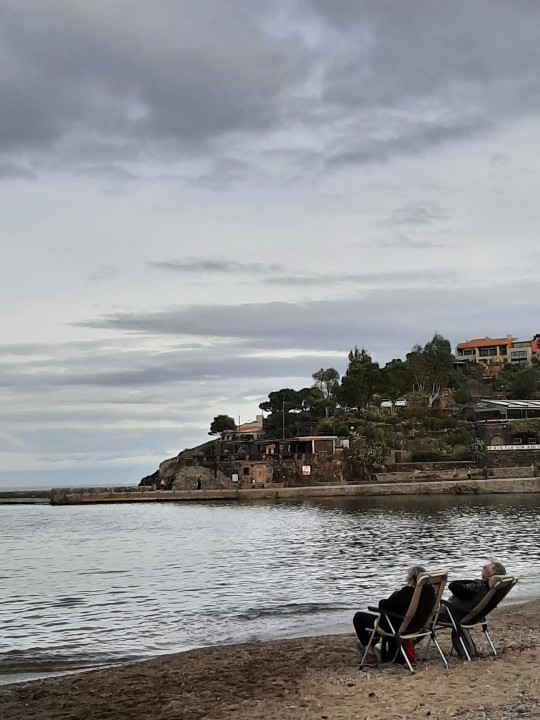
Desembre a Cotlliure
2 notes
·
View notes
Text
As creacións de Matisse e mais de Miró fronte a fronte
As creacións de Matisse e mais de Miró fronte a fronte
As sensibilidades e tendencias estéticas de Joan Miró e mais de Henri Matisse ofrécense agora conxuntamente na Fundació Miró, Barcelona, e na mostra Miró-Matisse. Més enllà de les imatges. Desde a forza colorista do fauvismo e mais desde o automatismo surrealista, as obras de ambos artistas van mostrando certas complicidades. Que aconteceu na primeira metade do século XX para que se revolucionase o traballo artístico?
Lito Caramés
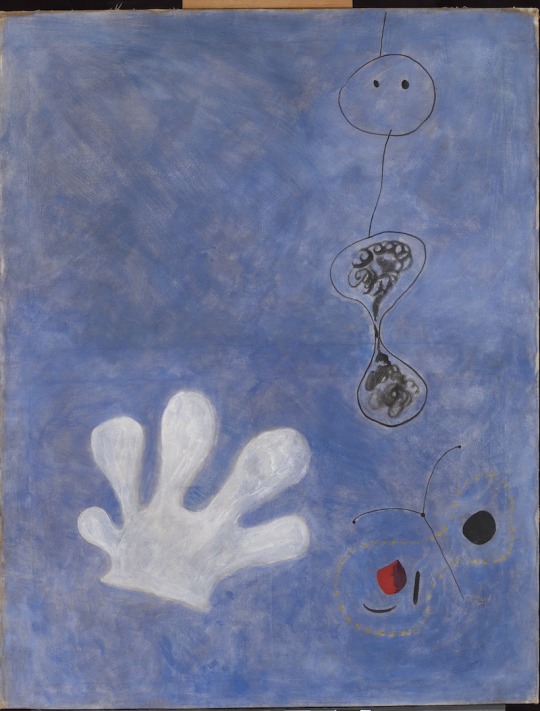
J. Miro. Pintura (El guant blanc), 1925
Miró-Matisse. Més enllà de les imatges. Fundació Miro, Barcelona
A Fundació Miró, Barcelona está presentando estes meses de finais de 2024 unha exposición especial: Miró-Matisse. Més enllà de les imatges, realmente unha experiencia única que xunta abundantes obras procedentes de moi diversas e prestixiosas coleccións. Algúns dos prestadores son o MoMA de Nueva York ou o Museo Reina Sofía de Madrid, o Musée de Grenoble ou o Musée des Beaux-Arts de Bélgica, así como as dúas entidades organizadoras da mostra: a propia Fundació Miró e o Musée Matisse de Nice, pois considérase que é nestas dúas institucións onde máis obras se conservan e estudan de ambos creadores do século XX. Trátase, por tanto, dunha ocasión especial para sopesar a forza creadora destes dous grandes artistas. En total a mostra Miró-Matisse. Més enllà de les imatges presenta máis de 180 obxectos como eixo polo que sopesar as proximidades e diferenzas de Miró e Matisse. Neste vídeo é doado facerse unha idea da amplitude e calidade da exposición.
A novidosa proposta está comisariada por Rémi Labrusse, da École des Hautes études en Sciences Sociales de Paris. Esta exposición -organizada y producida por la Fundació Joan Miró, junto con el Musée Matisse Nice- xa se puido ver con anterioridade en Niza.
Henri Matisse e mais Joan Miró foron dous dos grandes revolucionarios da arte da pasada centuria, dous dos guieiros daquelas vangardas que puxeron patas para riba estéticas e percepcións das realidades. Ben é certo que tamén esas vangardas deben ser revisadas e atribuír a importancia que se merecen a todos e todas as protagonistas. Estes meses o Museo Thyssen de Madrid presenta a mostra Gabriele Münter, la gran pintora exprsionista, unha artista da que nada se dicía e resulta que foi unha das fundadoras do movemento expresionista alemán. O caso de Múnter é un no medio da fraga de mulleres artistas ata agora ignoradas.

Matisse. Cotlliure a l'agost -1911
Agora nas salas da Fundació Miró, e no percorrido de Miró-Matisse. Més enllà de les imatges, hai a sensación de estar vendo creacións de dúas personalidades de diferentes xeracións e de diversos intereses, pero a estrutura da mostra ideada por Labrusse fai que se vaia tendo a impresión de que entre as pezas existe algunha comunicación. Desde a vitalidade que reverten pinturas e debuxos semella que circula unha enerxía similar. Enerxía que leva a un, o de Montroig, a estar sempre (segundo din algúns críticos) pintando, retocando, a súa pintura La Masia, e ao outro, o autor de La Dance, a ter como eixo directivo o colorismo radical polo que apostou de novo, a carón de Derain e cando estiveron en Colliure, esa pequena vila onde tamén descanso Antonio Machado, o poeta que, triste, doído, fuxiu de España nun xaneiro tenebroso de 1939 e ao que lle atoparon no peto do gabán dous versos derradeiros: Estos días azules / este sol de la infancia.
Afortunadamente, a comezos deste ano 2024 púidose ver na mesma Fundació Miró outro traballo de moi alta calidade que confrontaba e relacionaba as creacións de outras dúas grandes personalidades da arte de todos os tempos: Miró-Picasso. Foi aquela unha potente celebración, que tamén serviu para informar ao público en xeral que os dous mantiveron amizades, aínda que sempre seguiron vieiros diverxentes. Nunha carta de 1930, dille Miró ao de Málaga: Amigo y maestro: (…) He pasado unos días en Barcelona. Efecto, después de haber vivido en París, muy aplastante. La intelectualidad viven 50 años de retraso y los artistas hacen el efecto de aficionados. (…) Conforme con U., en que para ser pintor hay que quedarse en París.

Miró. Cambrils, la platja, 1917
Miró-Matisse. Més enllà de les imatges
“Servir-me de les coses trobades per diví atzar, ferros, pedres, com em serveixo d'un signe esquemàtic dibuixat per atzar sobre paper o d'un accident ocorregut també per atzar. És sols això, aquesta guspira màgica allò que compta en art.” (Miró, 1942).
Joan Miró e mais Henri Matisse coñecéronse e foron amigos a partires de 1934. A relación comeza por mor dunha galería de arte instalada en New Tork por Pierre Matisse. Este home, Pierre Matisse, era o fillo máis cativo do gran pintor francés Henri Matisse. Aos 31 anos xa abriu a súa galería en New York. Na Pierre Matisse Gallery puidéronse ver obras e exposicións monográficas de artistas como Leonora Carrington, Balthus, Marc Chagall, Alberto Giacometti, Henri Matisse, Joan Miró, Yves Tanguy, Alexander Calder, André Derain e, por suposto, do seu propio pai, Henri Matisse. No ano 1934 -é dicir axiña- Pierre Matisse logra xa ser o único representante de Joan Miró nos EEUU. Desde entón as relacións entre ambos artistas serán de amizade e tamén comerciais. A historiadora Élisa Sclaunick vén de publicar Pierre Matisse & Joan Miró. Ouvrir le feu. Correspondance croissée, 1933-1983, un libro que xunta por primeira vez o epistolario entre marchante e artista. Miró -igual que moitos dos seus compañeiros do movemento surrealista- por mor da II G. M. emigra aos EEUU, a New York concretamente. Alí Tanguy, Miró, Breton e tantas e tantos outros acaban por influír moi fortemente nun mangado de rapaces novos, norteamericanos e europeos, que conformarán a chamada Escola de New York, ou Expresionistas Abstractos.
Pola súa parte, outros -como Matisse e mais Picasso- deciden quedar en Francia e resistir á ocupación alemá e outras agresións dos fascismos. En 2007 o MACBA programou unha potente e crítica exposición titulada Sota la Bomba. O punto de partida da mostra era confrontar e contrastar a arte que se creou en Nova York e mais en París na década posterior á guerra: contrastar a arte como manifestación das expectativas de vida que se xeraban nas dúas ribeiras do Atlántico. (Sorprende, no exhaustivo traballo de F. Stonor Saunders, La CIA y la guerra fría cultural, 2013, coñecer o papel da CIA –a través do MOMA de New York e de todo tipo de axudas– para impulsart por todo o mundo a arte dos enfants terrible do expresionismo abstracto: os Pollock, de Kooning e compañía, contra os contestatarios e “pacifistas” europeos).
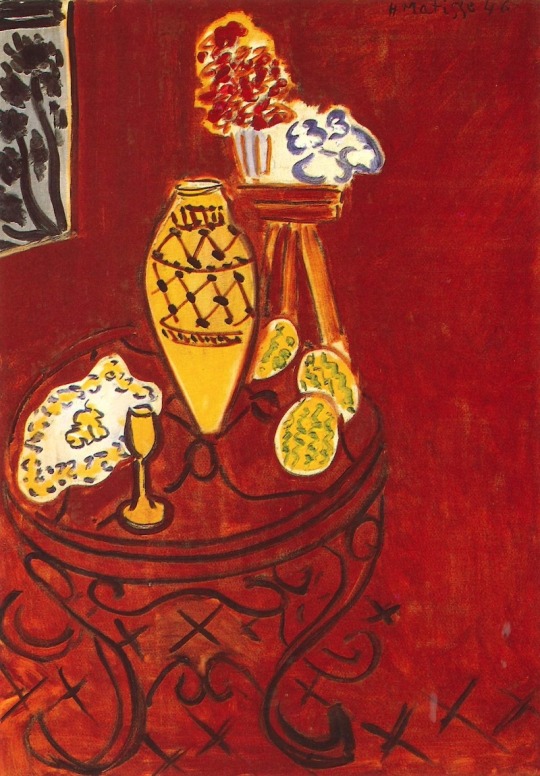
Matisse. Natura morta. Interior vermell de Venècia - 1946
Agora a mostra Miró-Matisse. Més enllà de les imatges permite sopesar as liñas creadoras dun e doutro artista. Liñas diverxentes, mais con puntos de achegamento. Ben é certo que Miró sempre se deixou levar polas súas preferencias querenzosas do surrealismo e por prácticas como a cerámica ou o azar que lle presentaba obxectos cos que logo poder elaborar pezas; un certo automatismo sempre estivo presente. Por iso, quizais se pode afirmar que Miró non estivese de acordo (nin Tanguy, nin Breton) coas verbas que o crítico H. McBride dedicou no The New York Sun ás artistas surrealistas que estaban presentes na mostra Exhibition by 31 Women que Peggy Guggenheim organizou en 1943 na súa galería neoiorquina: O surrealismo está formado por un 70% de histeria, un 20% de literatura, un 5% de boa pintura e un 5% de ataques a público inocente. (...) Tendo en conta as estadísticas que dan os médicos e as porcentaxes anteriores, é evidente que as mulleres deberían destacar no surrealismo. E por suposto destacan, coas histéricas, o espectáculo está asegurado. Esa histórica exposición acaba de ser recreada nas salas da Fundación Mapfre Madrid: 31 Mujeres.
Pola súa parte, Henri Matisse camiñou polas estradas multicolores que el mesmo (xunto con Derain) inventaron no Mediterráneo, e fixéronse fauvistas, convertéronse en fauves, en verbas do crítico Louis Vauxcelles, quen -aínda así- escribe “H. Matisse est l'un des plus robustement doués des peintres d'aujourd'hui”. É certo que sempre as cores dominarán os seus traballos; traballos que andando os anos pasarán a ser grandes murais, como La Dance. Sen esquecer a importancia de Matisse como escultor.
A mostra Miró-Matisse. Més enllà de les imatges é unha oferta potente e ben estruturada sobre as relacións entre estes dous artistas. Un paseo por unha parte moi importante da arte do século XX.
Lito Caramés
EXPOSICIÓN: Miró-Matisse. Més enllà de les imatges
Fundació Miró, Barcelona
ata o 9 de febreiro de 2025
0 notes
Text
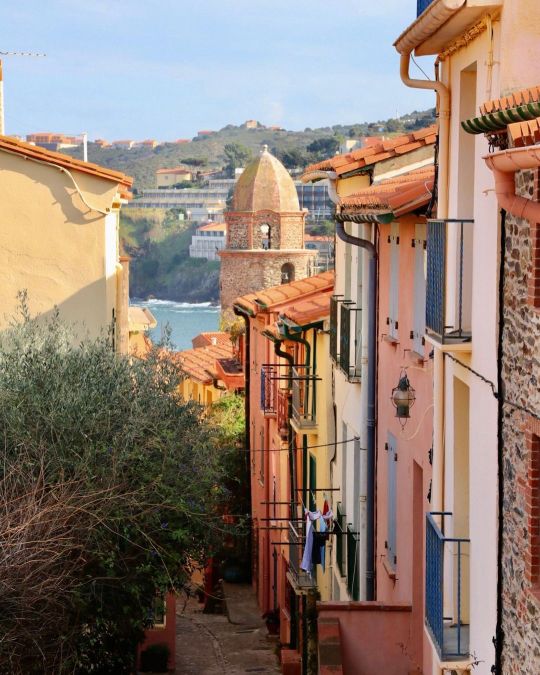
Cotlliure, Northern Catalonia.
Photo by by.perrine on Instagram.
#cotlliure#catalunya nord#fotografia#travel#sea#mediterranean#town#wanderlust#beautiful places#pays catalan#collioure#old town#travel photography#catalogne#pink#explore
228 notes
·
View notes
Text
Cotlliure, revisitada
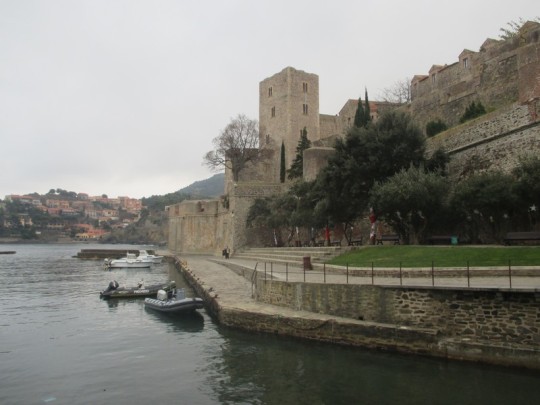
Pel pont del desembre vam tornar a visitar de nou la vila de Cotlliure, preciosa població marinera de la Costa Vermella de la Catalunya Nord, ja dins França. Vam fer tota la costa, des de Llança a Argelers. Grifeu, Colera, Port-Bou, Cervera, Banyuls, Port-Vendres. Petits pobles mariners, dormits a l’hivern, vora una mar grisa, calmada. Sense turistes, sense gentades. A Cotlliure, tot i ser…
View On WordPress
#antonio#banyuls#bar#cafe#cala#capillo#Catalunya#colliure#Costa#cotlliure#familia#Familiars#França#France#Francia#hotel#machado#madeloc#Mar#nord#Platja#restaurant#sola#sortida#sortides#sortir#templiers#vermella
0 notes
Text
Quan amics (sud-)catalans viatgen a la Catalunya Nord i pengen instastories amb coses com "France 😍😍" o banderetes franceses.... yikes
#una foto de cotlliure amb la caption ''collioure😍🇫🇷'' és l'equivalent a ''lérida😍🇪🇸''#si no t'agradaria veure'n un no facis l'altre#i punt#💬
8 notes
·
View notes
Photo

"I am Manfredi, grandson to the Queen Costanza: whence I pray thee, when return'd, To my fair daughter go, the parent glad Of Aragonia and Sicilia's pride; And of the truth inform her, if of me Aught else be told. [...]
Look therefore if thou canst advance my bliss; Revealing to my good Costanza, how Thou hast beheld me, and beside the terms Laid on me of that interdict; for here By means of those below much profit comes.
Dante Alighieri, Divine Comedy, Purgatory, III, 112-117 & 141-145
Costanza was born around 1249 to Manfredi of Sicily and his first wife Beatrice of Savoy ("et filiam suam Constantiam, quam ex prima consorte sua Beatrice filiam quondam A. Comitis Sabaudiae"). The exact date is unknown, but historian Saba Malaspina attests that when she was born, her grandfather was still alive (“imperatore vivente"). As for the place, it might have been one of the Apulian castles where the Emperor settled down in the last period of his life.
Her wet nurse was Bella d’Amico, mother of admiral Roger of Lauria. Bella, while she was alive, never parted from Costanza, acting like a mother and confidante, especially since Beatrice of Savoy, Manfredi’s first wife, had died when her daughter was just months old.
Nothing is known about Costanza’s childhood. She’s first mentioned when Berthold von Hohenburg asked for her hand on behalf of his nephew Januarius, son of his brother Diepold VIII. Berthold had married Isotta Lancia, cousin of Manfredi’s mother Bianca, and certainly intended to deepen his relationship with the Hohenstaufen’s family. Manfredi, on the other hand, was strenghtening his position (to the point he would be crowned on August 1258 King of Sicily, despite the true heir, his nephew Corradino was still very much alive, although far away in Germany) and so he could afford to reject this marriage proposal.
From a princess of low importance (despite the pretentious name which honored her great-grandmother Costanza I), Costanza soon became a valuable asset and, until Manfredi’s second marriage to Epirote princess Elena Angelina Doukaina, her father’s heir. The Sicilian King then started looking for an important match for his daughter, and ended up selecting Peter, son of Aragonese King James I.
Marriage agreements required that Manfredi supplied his daughter of a dowry of 50000 golden ounces (worth in gold, silver and jewels). On the other hand, the Aragonese crown committed to return the dowry to her family if Costanza were to die without heirs. She would also act as regent for her children (until they were 20 years old) in case Peter were to die before her. In addition, the Sicilian princess was given personal ownership of the city of Girona and the castle of Cotlliure.
Still, the future union presented some problems. First of all, that 50000 golden ounces dowry was indeed a large amount. Manfredi had an hard time collecting it (he had to increase taxes and that spread discontent among the population) and a lot of time passed before the Aragonese crown could collect it (alongside with the bride). The Papacy was obviously against this marriage, and Urban IV asked James I to give up to this union to avoid disgracing his House. Furthermore, in order to save the plans of the future marriage between his daughter Isabella and the heir to the French throne, James had to promise King Louis IX to not support Manfredi in his fight against the Papacy, as well as not helping Provençal rebel Bonifaci VI de Castellana against Charles of Anjou (the King’s younger brother).
Despite all the external pressure, James didn’t give up to the Sicilian match and on July 13th 1262, Peter and Costanza got married in the church of Notre-Dame des Tables (Montpellier). The difference between the lavish Hohenstaufen court and the more simple Aragonese one was huge (“And the said King Manfred lived more magnificently that any lord in the world, and with greater doings, and with greater expenditure”), but thanks to the accounting records of the time, we know that James and Peter tried their best to meet Costanza’s need, purchasing large amounts of luxury items. Since the incomes deriving from Girona and Cotlliure weren’t enough, she was given an annual pension worthy of 30000 Real de Valencia (a type of billon coin) which also soon wasn’t enough to cover the expenses.
Following the death of Manfredi in the Battle of Tagliacozzo (1266) against Charles of Anjou, many of his former supporters (or simply people linked to him, like the former Nicaean Empress as well as his sister Costanza) fled the Kingdom of Sicily and took refuge in Aragon. The death of Corradino (executed in Naples in 1268 by order of Charles after the Battle of Benevento) and the fact that Manfredi’s sons from Helena Doukaina were just children and in French hands (they will die in captivity years later), made Costanza the only legitimate heir to the Sicilian crown. Starting this moment Costanza started being referred as queen (not infanta or madama) in the documents of the Aragonese Chancellery.
In 1276 James I died, and so Peter was crowned king of Aragon. In the meantime, Costanza had already given birth in 1265 (November 4th) to the firstborn and heir, Alfonso. Followed by another male, James (April 10th 1267), and then Isabella, future Queen consort of Portugal (1271), Frederick (December 13th 1272), Yolanda (1273) and finally Peter (1275). According to historian Muntaner, although it wasn’t a love marriage, Peter and Costanza came to care for each a lot and “there were never was so great love between husband and wife as there was between them, and always had been”.
On Easter 1282, Sicilians started their revolt against the French rule, starting the so called Sicilian Vespers. Peter was quick to reclaim the crown of Sicily and Apulia on behalf of his wife. To the eyes of many Sicilian nobles the King of Aragon could be considered their legitimated master due his marriage to Queen Costanza (”nostre natural senyor, per raho de la regina e de sos fills” ). Before leaving headed for Africa (from where he would launch his invasion of Sicily), Peter named Costanza and their son Alfonso regents of the Kingdom of Aragon during his absence. As soon as he took possession of the island, Peter asked his wife and their children James, Frederick and Yolanda to join him. When the Queen arrived in Trapani in the spring of 1283, she received a warm welcome and was saluted by the people as their natural leader (”cela qui era lur dona natural”; Bernat Desclot, Llibre del rei en Pere d'Aragó e dels seus antecessors passats, ch. 103).
It is around this period that her strained relationship with lady-in-waiting and de facto second lady of the Island, Macalda di Scaletta (wife of Alaimo da Lentini, Grand Justiciar of the Kingdom of Sicily), was born. Macalda, who is described by historical sources as an ambitious and greedy woman, had tried to seduce Peter of Aragon, but without success. Since the King had declared himself devoted to his wife, the Sicilian baroness developed a burning hate towards her rival, the Queen.
In Messina, Costanza could finally embrance her husband again, but their meeting only lasted three days and it was their last. The King named his wife Regent of the Kingdom of Sicily (“Quant lo rey hac estat ab sa muller e ab sos infants en la ciutat de Mecina, e hac stablit sos balles e sos vicaris per tota Cecilia, si los feu comandament que tots fessen lo manament de la reyna e de son fill En Jaume, axi com perell, e comana la reyna als homens de Cecilia e de Mecina, e sos fills”) and returned to Aragon as his rival, Charles of Anjou, had proposed a trial by combat (who would never take take place) to be ideally fought in Bordeaux to decide the fate of the contended Kingdom. Peter died two years later in Villafranca del Penedès (Catalonia), on November 11th 1285.
Before leaving Sicily, Peter had declared that the Kingdom wouldn’t be merged into the Aragonese-Catalan territories, mantaining his autonomy, and that in thet future the succession of the two reigns would be handled separately, specifically with the Sicilian throne bequeated to the second son (at that time, James, already named Lieutenant of the Realm).
With Peter dead, Costanza didn’t choose to rule over Sicily by herself despite being its titular queen, but, as it had already been decided, relinquished her rights to her second son James (although she would keep managing the island on his behalf), while Alfonso succeeded his father. In accord to the pre-nuptial arrangements, the Dowager Queen supported her teen son in the matter of ruling the Kingdoms he had inherited.
In 1284, Costanza’s milk brother, Roger of Lauria carried out a successful expedition in the Gulf of Naples. The admiral captured Charles of Salerno, the Angevin heir, and took him in Messina, where he was saved by the angry mob thanks to the intervention of the Dowager Queen. During the same raid, Lauria had freed Princess Beatrice of Hohenstaufen, Costanza’s younger half-sister. The Queen soon put her unfortunate sister under her protection, arranging Beatrice’s marriage with Costanza’s half-nephew, Manfredo IV Marquis of Saluzzo. The wedding was celebrated in October 1286 in Messina, and during the celebration the Princess had to give up on her rights to the Sicilian throne.
In 1290 she deployed troops to defend the city of Acre, but given the excommunication of Pope Martin IV against Peter III of Aragon and the Sicilian people, those troops were sent back. The following year, 1291, Acre would be conquered by Mamluk forces.
Also that year, Alfonso III died heirless. James succeeded him as King of Aragon, Valencia and Majorca, Count of Roussillon, Cerdanya and Barcelona, and, in normal circumstances, his brother Frederick would have inherited the Sicilian Crown, but James had other ideas. The new King kept Sicily for himself, naming Frederick Lieutenant of the Realm. The dispossessed Prince then left the Kingdom headed to Sicily, where he joined his mother Costanza.
Her son’s death represented a turning point in her life. Although already a pious woman, she started pondering about a future in the cloister and retired in a Clarisse nunnery she had personally founded in Messina.
In 1295, James signed the Treaty of Anagni, an accord signed by Boniface VIII, James II of Aragon, James II of Majorca, Charles II of Anjou and Philip IV of France, which should have put to an end to the Vespers War. As part of the terms, the King of Aragon had to return the island of Sicily to the Pope (let’s remember the fact that officially, since Norman times, the Kingdom of Sicily was actually one of the Papacy’s many fiefs, and that its lords were just lieutenants), who would in turn give it to Charles of Anjou, in exchange for the annulment of the excommunication weighing over him and the concession of the licentia invadendi (the permission to invade) concerning the islands of Sardinia and Corsica. The treaty required moreover a double dinastic union, James would have married Princess Blanche of Anjou, while her brother Robert was wed to James’ sister Yolanda.
There was someone in particular, though, who wasn’t happy about this settlements. Backed up by the Sicilian population who refused to return under French domination, Infante Frederick was crowned King of Sicily in Palermo on March 25th 1296, de facto nullifyng any attempt to stop the war.
This had a huge impact in his mother’s life. Unlike her son, Costanza had always recognized the Papal authority. By not accepting the treaty’s terms, Frederick had in fact rebelled against the Pope (not mentioning his own brother). Costanza chose then not to support him and, because of this, she had to leave Sicily since, as Papal emissaries put it, if she stayed she could be considered an accomplice (“E madona la regina Costança fo absolta per lo Papa, é tots aquells qui eren de sa companyia , si que tots dies oya missa; que axi ho hach a fer lo Papa, per convinença a les paus quel senyor rey Darago feu ab ell. Per que madona la regina parti de Sicilia ab deu galees , e anassen en Roma per pelegrinatge” in Crónica de Ramon Muntaner, ch CLXXXV).
Together with her longtime supporters, Giovanni da Procida and Roger of Lauria, in february 1297, she traveled to Rome where the Pope had promised to economically support her staying in Rome (although apparently it was a short-lived promise) and where she witnessed her daughter Yolanda’s marriage to Robert of Anjou. In 1299 the Dowager Queen returned to Catalonia and died in Barcelona on April 8th 1302 (“Non sine cordis amaritudine vobis presentibus intimamus quod die Veneris Sancta, quasi in media nocte, serenissima et karissima domina et mater nostra domina Constancia, fidelis recordacionis Aragonum regina, diem clausit extremum, ex quo tanto nos pungit doloris ictus acerbus quanto per eius obitum sentimus nos tante matris solacio destitutos.” in La muerte en la Casa Real de Aragón..., p.20).
Aside from many donations to various religious houses, in her will (dated february 1st 1299) Queen Costanza would include a small bequest in favor of her son Frederick with the condition he had to make peace with the Pope, observing thus the terms of the Treaty of Anagni.
She was buried wearing the Franciscan habit in the convent of St. Francis in Barcelona (“E a Barcelona ella fina , e lexas a la casa dels frares menors, ab son fill lo rey Nanfos, e muri menoreta vestida ” Crónica de Ramon Muntaner, ch CLXXXV). In 1852 her remains would be moved to Barcelona Cathedral by order of Queen Isabella II of Spain.
Sources
Claramunt Rodríguez Salvador, Alfonso III de Aragón
Corrao Pietro, PIETRO I di Sicilia, III d'Aragona in Dizionario Biografico degli Italiani, vol. 83
Desclot Bernat, Crónica
Ferrer Mallol María Teresa, Constanza de Sicilia
Hinojosa Montalvo José, Jaime II
La Mantia Giuseppe, FEDERICO II d'Aragona, re di Sicilia in Enciclopedia Italiana
La muerte en la Casa Real de Aragón Cartas de condolencia y anunciadoras de fallecimientos (siglos XIII al XVI), ARCHIVO DE LA CORONA DE ARAGÓN
Malaspina Saba, Rerum Sicularum
Muntaner Ramon, Crónica / translation by Lady Goodenough
Sicily/Naples: Counts & Kings
Walter Ingeborg, COSTANZA di Svevia, regina d'Aragona e di Sicilia in Dizionario Biografico degli Italiani, vol. 30
#historicwomendaily#history#women#history of women#historical women#costanza ii#House of Hohenstaufen#house of aragon and sicily#peter iii of aragon#norman swabian sicily#aragonese-spanish sicily#people of sicily#women of sicily#vespri siciliani#myedit#historyedit
68 notes
·
View notes
Text
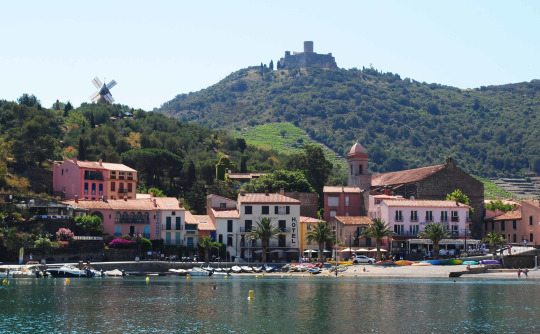
Cotlliure, vila marinera de la Marenda, Catalunya del Nord, Principat de Catalunya, Catalunya. Al fons, dalt de la muntanya, el castell de Sant Elm.
#Cotlliure#vila marinera#vila#pobla#cases#Rosselló#Albera#Costa Vermella#Principat de Catalunya#Catalunya#mediterraneu#mediterrani#Mediterrània#Castell de Sant Elm
1 note
·
View note
Text
Hellooo! Today, in France, we visited the center of the town of Cotlliure🇫🇷🇫🇷. We've seen the castle, the beach, the church and a few streets. Ofc I leave u some photos👇




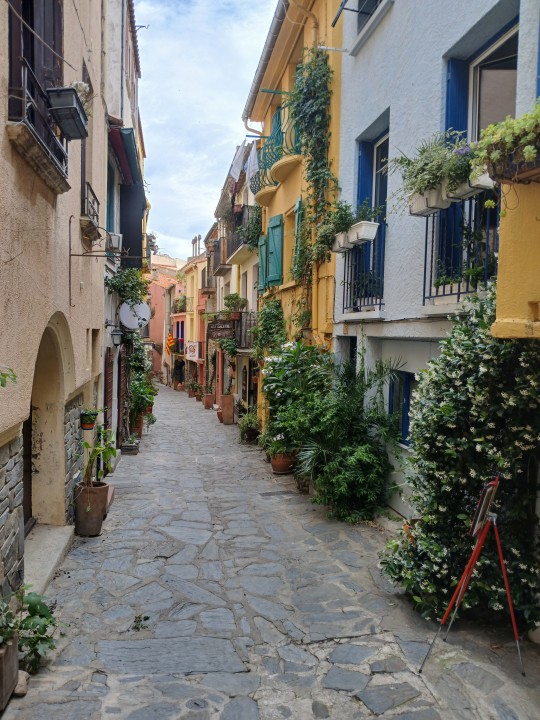

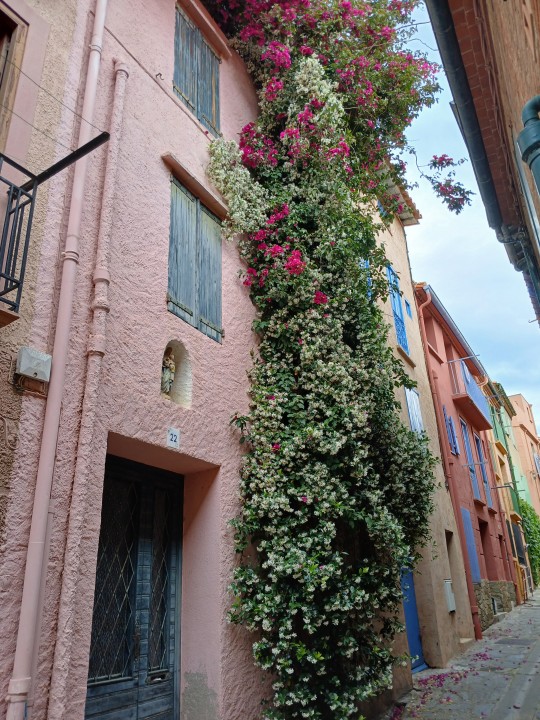


#artists on tumblr#sunset#fyp#fypage#fypシ#photographers on tumblr#tumblr fyp#tumblr#scrapbook#sea#Cotlliure🇫🇷
1 note
·
View note
Text
Very funny how neither CS Forester nor Patrick O'Brian were buried in England. Guys really said yeah I'll write about it but I don't like it that much
#it makes sense for both of them they seemed to like their adopted countries better and pob seemed halfhearted about englishness anyway#but it is very funny that they spent a whole lot of their lives in the united states and france respectively#this re: discussion of the guys' graves and whether or not to visit#i'm going to go to cotlliure this summer though my parents refuse to believe me but i'll make it work#french can't stop me it's just badly pronounced catalan and i'll only speak to old people if i have to#perce rambles#percy yells at cecil scott#The Creative Endeavor and other aubreyad nonsense#going to go to sleep before my powers of speech get any further disjointed goodnight
44 notes
·
View notes
Photo
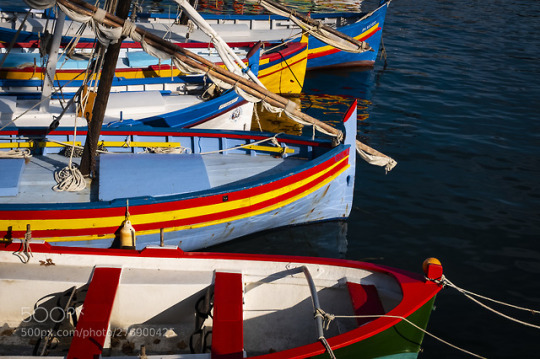
Colours of the sea by HariesAutoMoto
#barco#barca#vaixell#boat#ship#navire#colliure#cotlliure#francia#frança#france#colors#colours#port#pu
0 notes
Video
Pyrénées Orientales, Collioure par Olivier Boyer Via Flickr : DSC6123
1 note
·
View note